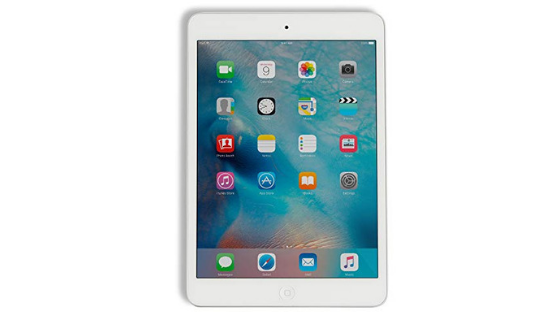The iPad mini is the most modest version of the Apple tablet, and has a number of differences when comparing its generations. Small and easy to carry, it is not an “entry” product and is almost as potent as its larger counterparts.
The iPad mini had five different versions by 2019, since the original release in 2012, and here you can see the differences between them.

What are the differences between the iPad mini models?
Launched in 2012, the iPad mini is currently in the fifth generation, and has since received several additions, although visually it has changed very little.
Let’s see how it evolved:
Design
This has changed little. Since the first version, the model remains with form factor of 4:3 aspect ratio, with wide edges in the upper and lower parts, although some adjustments have been made in the dimensions and weight, even if few.
Of these, the most striking setting is thickness: 7.1 mm in the first generation, 7.4 mm in the mini 2 and 3 iPads, and 6.1 mm in the fourth and fifth generations.
Display
The iPad mini uses a 7.9-inch IPS LCD display and 4:3 aspect ratio in all its incarnations but with different resolution and features depending on the model:
- Original mini iPad: Resolution of 1,024 x 768 pixels (163 ppi);
- iPad mini 2 and iPad mini 3: Retina Display (2,048 x 1,536 pixels, 326 ppi);
- iPad mini 4: Retina display, with anti-glare coating;
- iPad mini (2019): Retina Display, 1st generation Apple Pencil support, True Tone and 500 nits brightness.
Performance
In 2012, it was equipped with an Apple A5 32- bit processor, the same present on the iPad 2 and iPhone 4S. The iPads mini 2 and 3, released respectively in 2013 and 2014, made use of the Apple A7, the first 64-bit apple processor, also featured in the iPad Air and iPhone 5S, which brought more processing power.
In 2015, Apple equipped the iPad mini 4 with the Apple A8, present in iPhones 6 and 6 Plus, and which is now used in Apple HomePod. As early as 2019, the fifth-generation iPad mini boasts the Apple A12 Bionic, featured on iPhones XS, XS Max and XR, as well as iPad Air (2019). As usual, each new generation of processor brings more processing power. It is worth mentioning that the Touch ID, the digital recognition feature, was introduced in the iPad mini 3, and maintained in later Apple models.
In RAM, the original came equipped with 512 MB LPDDR2, the iPads Mini 2 and 3, with 1 GB LPDDR3, the iPad mini 4, with 2 GB LPDDR3, and the fifth generation, with 3 GB LPDDR4X.
Finally, the storage options were as follows:
- Original Mini iPad: 16, 32 or 64 GB;
- iPad mini 2: 16, 32, 64 or 128 GB;
- iPad mini 3 and iPad mini 4: 16, 64 or 128 GB;
- iPad mini (2019): 64 or 256 GB.
Note that each generation of the iPad mini has two distinct versions, Wi-Fi (Wi-Fi only), and Wi-Fi + Cellular (Wi-Fi and nano-SIM card operators), with price differences between them. Apple is the only tablet maker that differentiates models by connectivity capability.
My Account
Tablets are not the best gadgets for taking pictures, but they are very good for video conferencing. Ironically however, Apple kept the same selfie camera of 1.2 megapixels in the first four generations of the iPad mini, and only in the 2019 model was it replaced by a 7-megapixel camera. The main camera has 5 megapixels in the first three generations, and 8 megapixels in the next two generations.
Prices
The launch prices of the iPad mini models is almost same:
- Original iPad mini: from $329 (Wi-Fi) and $459 (Wi-Fi + Cellular);
- iPad mini 2: from $399 (Wi-Fi) and $529 (Wi-Fi + Cellular);
- iPad mini 3: from$399 (Wi-Fi) and $529 (Wi-Fi + Cellular);
- iPad mini 4: from $399 (Wi-Fi) and $529 (Wi-Fi + Cellular);
- iPad mini (2019): from $399 (Wi-Fi) and $529 (Wi-Fi + Cellular).
